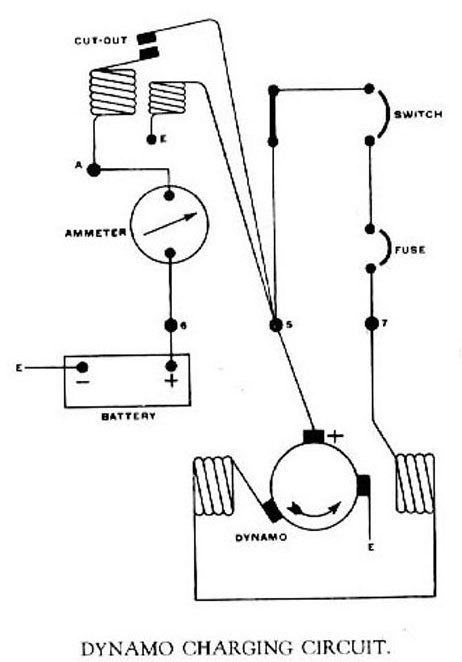
When the switch is moved to "dyn. on," the field circuit is closed through the fuse, voltage is generated in the dynamo and current flows through shunt coil of the cut-out. When the voltage is sufficient to charge the battery the current flowing through the shunt of the cut-out is sufficient to the close the contacts of the series coil so that charging current can flow through the ammeter into the battery. If the voltage drops below the charging value, the contacts of the cut-out separate automatically.
The arrangement of three brushes on the commutator renders the dynamo self-regulating (i.e., its voltage remains nearly constant over a wide range of speeds) so long as the main charging circuit is intact. A loose contact, by diminishing the armature current and, therefore, its magnetic re-action on the field tends to raise the voltage across the field circuit and, therefore, to blow the fuse by an increase in the field current. If the fuse blows, look for a loose contact.
THE AMMETER
With the switch in the "dyn. on" position, the ammeter registers the net charging current, i.e., gross current from the dynamo less current flowing through the ignition or lamp circuits. The starter motor circuit is entirely independent of the ammeter.



